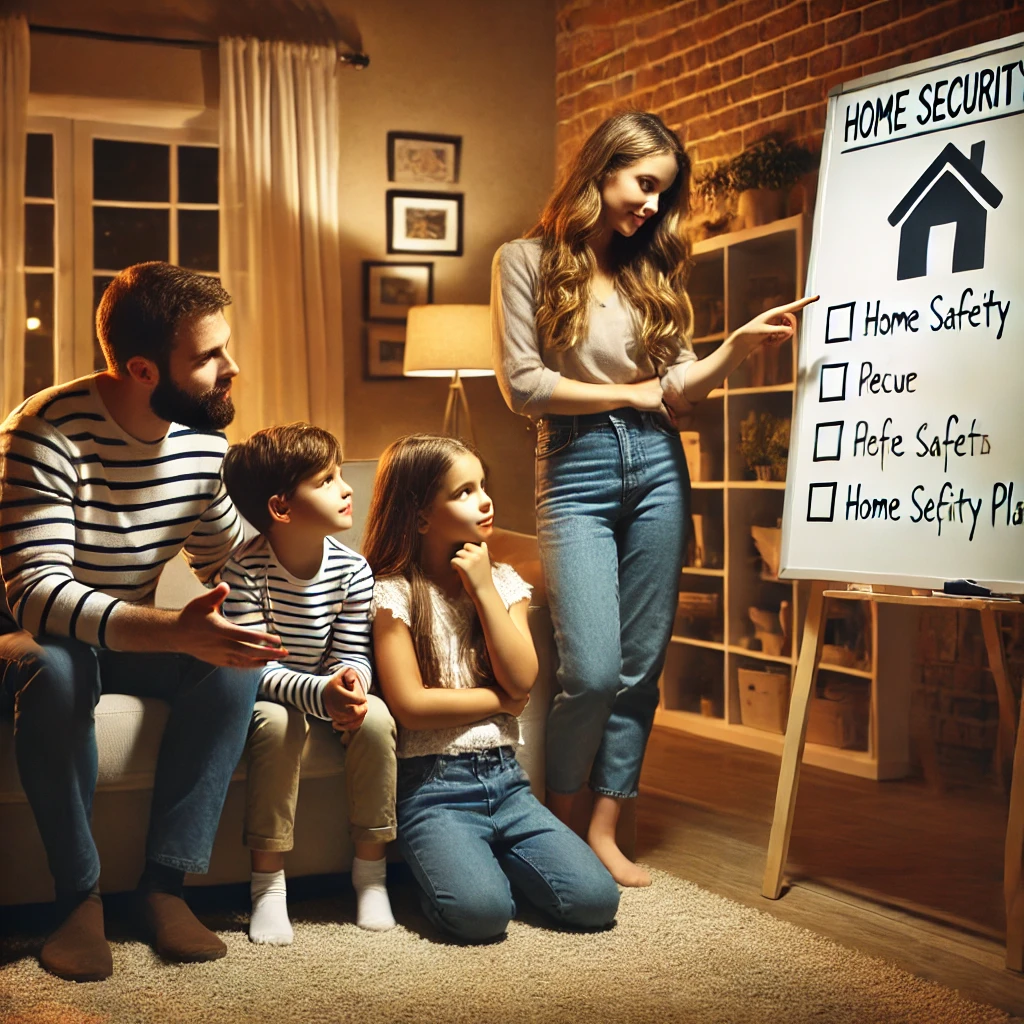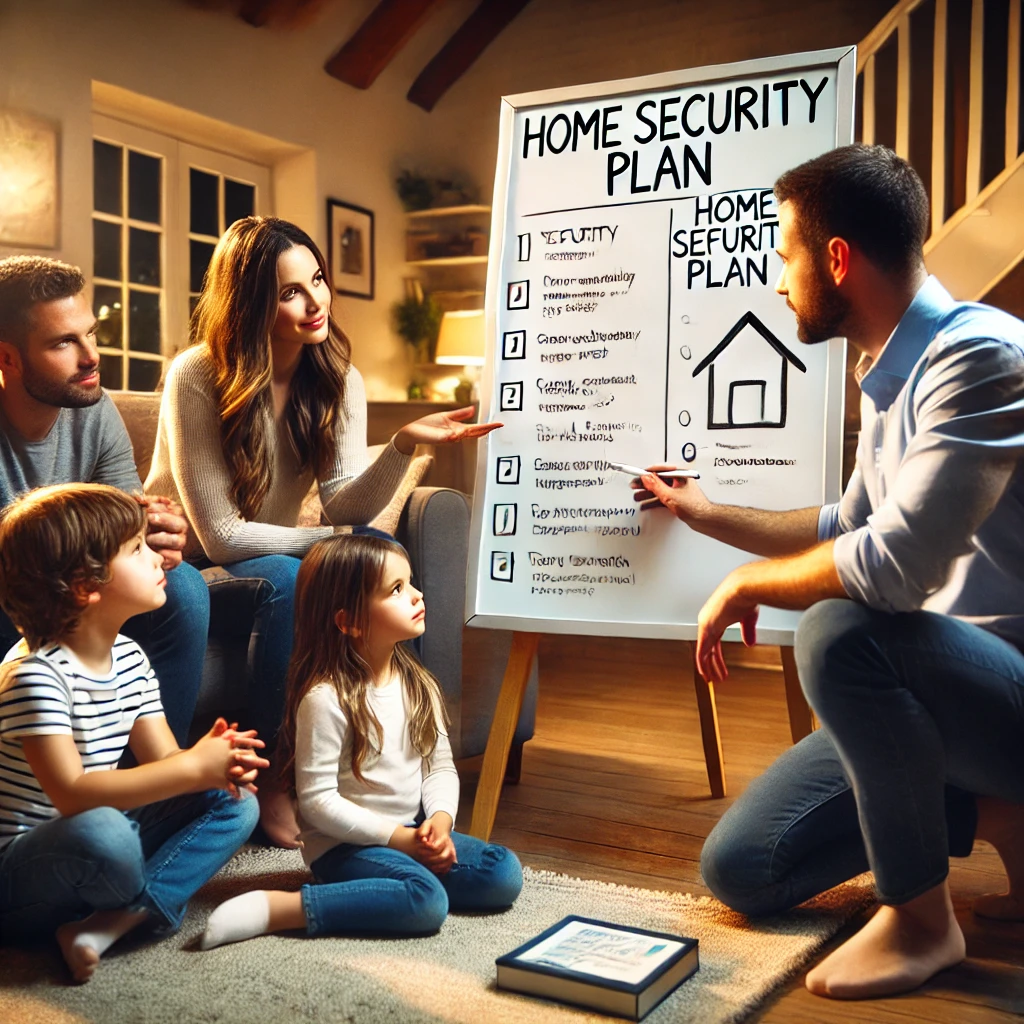Essential Family Security Meetings: Keep Your Home Safe
Family security is a cornerstone of a safe and harmonious home environment. Organizing Essential Family Security Meetings ensures that every member understands their role in maintaining safety. These meetings foster communication, build trust, and empower everyone to contribute to the family’s security.

Setting the Agenda
To maximize the effectiveness of family security meetings, start by setting a clear agenda. Identify key topics such as emergency contacts, home security systems, and recent safety concerns. Regularly scheduled meetings keep everyone engaged and responsive to new challenges.

Key Topics to Cover:
- Emergency Contacts: Ensure everyone knows whom to contact in an emergency.
- Home Security Systems: Discuss current measures, potential upgrades, and additional features.
- Safety Concerns: Address any recent incidents or vulnerabilities.
Involving All Family Members
Involving everyone, including children, reinforces the importance of security. Assign roles and responsibilities, such as handling emergency calls or operating security systems. This involvement educates and empowers family members.
Roles and Responsibilities:
- Emergency Calls: Designate who will make calls during emergencies.
- System Operation: Teach family members how to use security systems.
- Safety Education: Engage children with age-appropriate safety discussions.
Discussing Home Security Systems
Review your current security measures at each meeting. Discuss upgrades or additional features that could enhance safety, like smart locks, cameras, or alarm systems. Keeping everyone informed ensures effective use of these systems when needed.
Upgrading Security:
- Smart Locks: Consider integrating smart locks for added convenience and security.
- Cameras: Evaluate the placement and effectiveness of security cameras.
- Alarms: Ensure alarms are functional and accessible to all family members.
Emergency Preparedness
Develop a comprehensive family emergency plan. Discuss potential scenarios such as fires, break-ins, or natural disasters, and conduct regular drills to ensure everyone knows what to do. Practicing these scenarios can make a significant difference in real-life situations.
Creating an Emergency Plan:
- Scenario Planning: Discuss various emergency situations and appropriate responses.
- Drills: Conduct regular practice drills to reinforce procedures.
- Supply Kits: Prepare emergency kits with essential supplies.
Communication Protocols
Establish clear communication protocols for emergencies. Decide on primary and secondary contact methods, such as phone calls or messaging apps. Consider using technology like family tracking apps for real-time location sharing during emergencies.
Effective Communication:
- Primary Contacts: Determine the main method for emergency communication.
- Backup Methods: Establish secondary options if primary methods fail.
- Technology Integration: Use apps for real-time updates and location sharing.
Neighborhood Involvement
Participating in neighborhood watch programs can enhance your home’s security. Share tips and updates with neighbors to create a supportive community environment. This collective effort deters potential threats and provides additional safety for everyone.
Building Community Security:
- Neighborhood Watch: Join or start a local watch program.
- Information Sharing: Regularly exchange safety tips and updates with neighbors.
- Community Events: Organize events to strengthen neighborhood bonds.
Reviewing and Updating Plans
Regularly review and update your security plans to adapt to new challenges or changes in family dynamics. This ensures that your strategies remain effective and relevant.
Continuous Improvement:
- Plan Reviews: Schedule regular reviews of security plans.
- Adaptation: Adjust plans based on new threats or family changes.
- Feedback: Encourage family members to provide input for improvements.
Conclusion
In summary, Essential Family Security Meetings are a proactive approach to maintaining a safe home. By involving all family members, discussing comprehensive plans, and staying informed, you can enhance your home’s security and create a safer environment for everyone.











